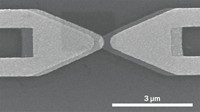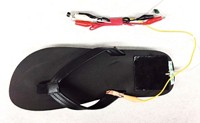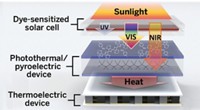Advertisement
Grab your lab coat. Let's get started
Welcome!
Welcome!
Create an account below to get 6 C&EN articles per month, receive newsletters and more - all free.
It seems this is your first time logging in online. Please enter the following information to continue.
As an ACS member you automatically get access to this site. All we need is few more details to create your reading experience.
Not you? Sign in with a different account.
Not you? Sign in with a different account.
ERROR 1
ERROR 1
ERROR 2
ERROR 2
ERROR 2
ERROR 2
ERROR 2
Password and Confirm password must match.
If you have an ACS member number, please enter it here so we can link this account to your membership. (optional)
ERROR 2
ACS values your privacy. By submitting your information, you are gaining access to C&EN and subscribing to our weekly newsletter. We use the information you provide to make your reading experience better, and we will never sell your data to third party members.
Materials
Turning Heat Into Electricity
Device converts infrared radiation directly into electricity
by Journal News and Community
November 14, 2011
| A version of this story appeared in
Volume 89, Issue 46
A new thin-film device turns an annoying optical effect into a means to convert infrared radiation directly into electricity (Nano Lett., DOI: 10.1021/nl203196z). Researchers hope it will lead to inexpensive, flexible films that could recoup wasted energy when wrapped around hot machines. The hotter an object is, the more infrared radiation it produces. The device relies on waves called plasmons, which are created when photons strike a metal surface. Plasmons decay quickly and transfer their energy to electrons in the metal. Normally, this decay process is a nuisance for optics researchers. But Nicholas Melosh of Stanford University decided to harvest the resulting high-energy electrons with a simple device consisting of two thin-film metal electrodes sandwiching an insulating layer. After a plasmon decays in the top electrode, the resulting excited electrons jump across the insulating layer to the other electrode, generating a current. Although the device’s efficiency is now only 1%, Melosh thinks that it would need to reach only 4 to 5% efficiency to be practical.





Join the conversation
Contact the reporter
Submit a Letter to the Editor for publication
Engage with us on Twitter